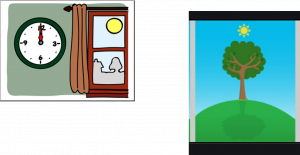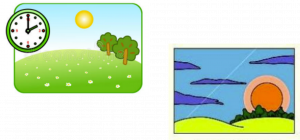Fulfulde/Fula/Peul/Pulaar/Fulani
How to greet in Fulfulde (all day long!)
Letters and Sounds
New letters
ɓ = ɓiɓɓe
ɗ = ɗiɗi
Ƴ = moƴƴi
ɲ = gna / ni (onion)
ŋ = nha/ ng (sing)
Consonants
c = ch
g = always hard g
h = always aspirated
r = rolled
Vowels
a = hot
e = get
i = bead
o = road
u = shoe
a = hot
e = get
i = bead
o = road
u = shoe
Nasal Compounds
mb (mbaalu)
nd (ndaarude)
nj (njaram)
ng (ngesa)
mb (mbaalu)
nd (ndaarude)
nj (njaram)
ng (ngesa)
Greetings
Bette

Instructions: The instructor should read the dialogue aloud twice. Then, the instructor and student will each take a different part of the dialogue, read it twice, and then swap.
P1: Jam waali. A waali e jam?
P2: Jam tan. Ada selli na?
P1: Baasi fuu wala.
P2: Bismilla.
P1: Sah. Tiyaabu.
P2: Baraaji.
Translation:
P1: Good morning (literally “peaceful night” in the past tense). Did you spend your night in peace?
P2: Peace only. Are you healthy?
P1: No problems here.
P2: Welcome.
P1: [Sah is a response to Bismilla, no direct translation]. Thank you/goodbye.
P2: You’re welcome/goodbye
Tiyaabu is a multi-purpose word; it serves as both thank you and goodbye (you see this occasionally in emails in English). Baraaji is the response to tiyabuu. Some people will say “An e tiyabuu” and the response is “An e baraaji” but the meaning does not change.
Hakkunde Naange

Instructions: The instructor should read the dialogue aloud twice. Then, the instructor and student will each take a different part of the dialogue, read it twice, and then swap.
P1: Jam weeti?
P2: Jam tan. A weeti e jam?
P1: Sago men tan. Ada selli na?
P2: Baasi fuu wala.
P1: Tiyaabu.
P2: Baraaji.
Translation:
P1: Peaceful morning?
P2: Peace only. Did you spend your morning in peace?
P1: Our [inclusive we pronoun] wish only. Are you healthy?
P2: No problems.
P1: Thank you/goodbye.
P2: You’re welcome/goodbye
Kiikiide

Instructions: The instructor should read the dialogue aloud twice. Then, the instructor and student will each take a different part of the dialogue, read it twice, and then swap.
P1: Jam ɲalli! A ɲalli e jam?
P2: Jam tan. Kori a warii e jam?
P1: Jam tan. A reenike?
P2: Baasi fuu wala. Mi jowta yimbe ma.
P1: Be naanan. Tiyaabu.
P2: Baraaji.
Translation
P1: Good afternoon! (lit. peaceful noon/midday). Did you spend your midday in peace?
P2: Peace only. I hope you came/arrived in peace?
P1: Peace only. Are you protected/fine?
P2: No problems here. I greet your people.
P1: They will hear it. Thank you.
P2: You’re welcome.
Jamma

Instructions: The instructor should read the dialogue aloud twice. Then, the instructor and student will each take a different part of the dialogue, read it twice, and then swap.
P1: Jam hiiri.
P2: A hiiri e jam?
P1: Jam tan. Ada selli?
P2: Baasi fuu wala. Jam waalanen.
P1: Amiina.
Translation
P1: Good evening (lit. peaceful afternoon)
P2: Did you spend your afternoon in peace?
P1: Peace only. Are you healthy?
P2: No problems. Have a good night.
P1: Amen.
Final exercise: How are these dialogues similar? Different? Which responses go with which types of questions? Once you have identified some of the pairs, practice greeting with a partner for each time of day, using different questions and responses each time.

